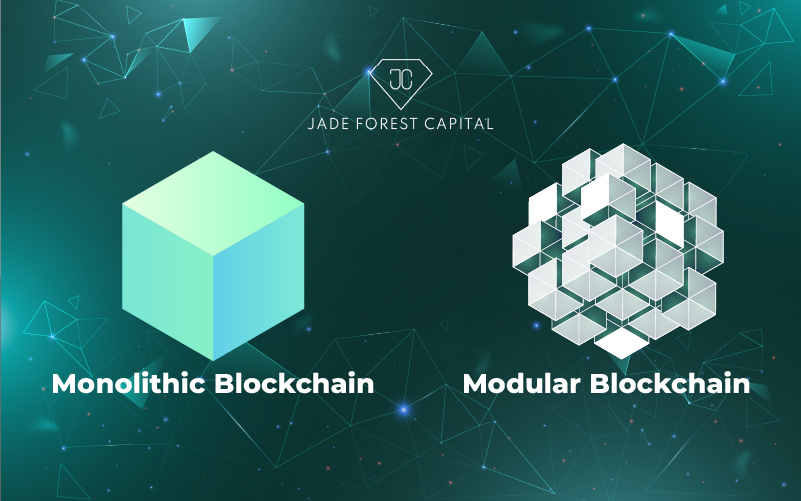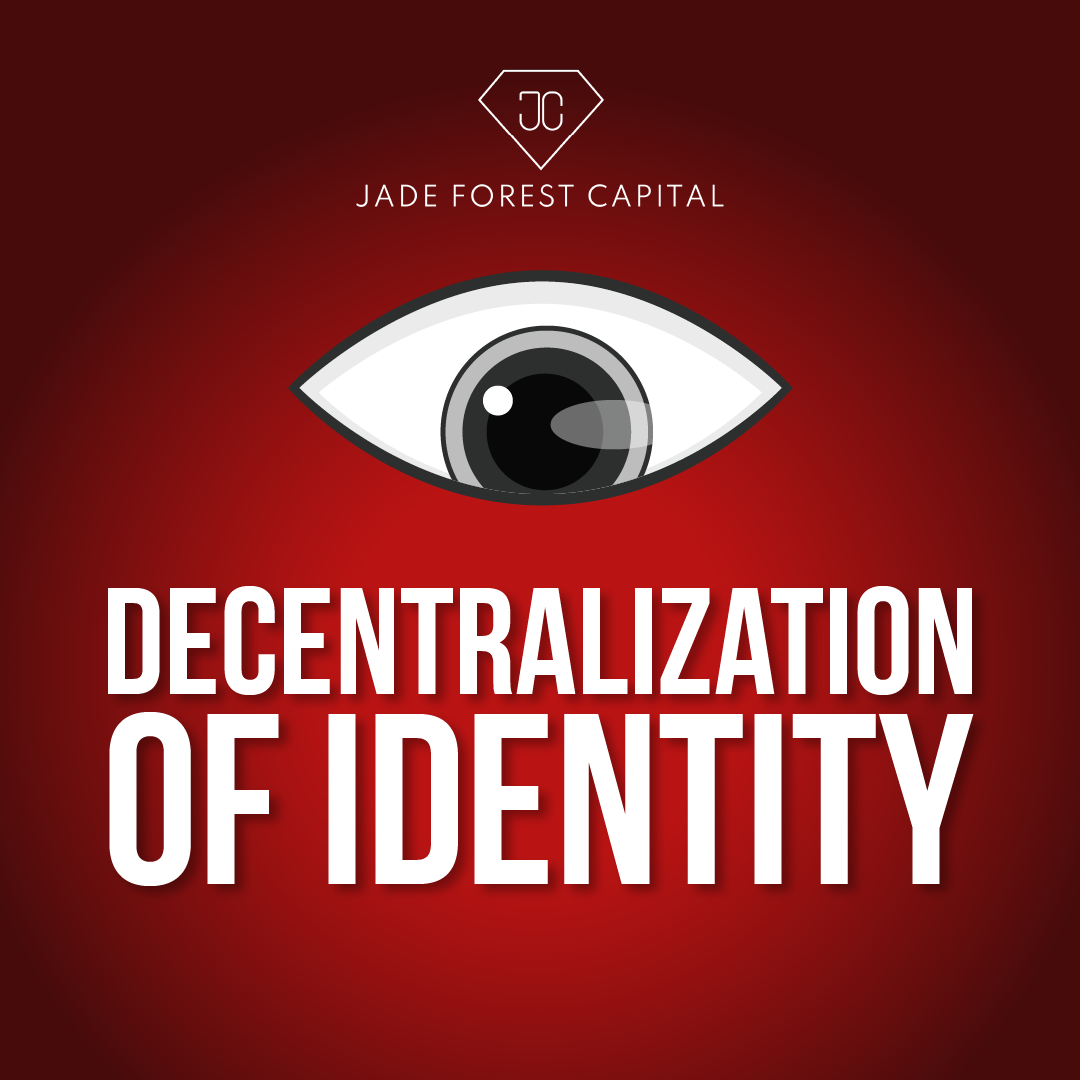Investors are rapidly becoming more familiar with the definition of blockchain. Blockchain technology, however, is also constantly changing to meet market demands. This makes it necessary for investors to remain updated with blockchain developments and Modular blockchain is one of them. This article will discuss this development in order to help investors shape the future development of blockchain, hence assisting us in making the best investment choices.
Let’s look at the most recent event, the Merge, before discussing Modular blockchain. The success of this event represented a development of Ethereum and had significant effects on the Modular blockchain. This is considered as a new path for the blockchain. So, what are Monolithic blockchain and Modular blockchain? Let’s find out with Jase Forest Capital.
The core essence of blockchain
To make it easier for readers to understand, Jade Forest Capital will explain the concepts of how blockchain works, including the following components:
1. Consensus: These consensus algorithms are used in decentralized computer networks to assist in data value consensus and maintain network homogeneity among the system’s computers.
The only person who has the right to edit and modify data in traditional data management, such as a company’s data (employee details, contracts, etc.), is the administrator. Blockchains, in contrast, will operate in a decentralized way, allowing data to self-regulate and self-update without relying on a third party. They involve the contributions of hundreds or even thousands of participants engaged in verifying and validating transactions that occur on the blockchain and on block mining operations.
To become decentralized, blockchain requires an effective, equitable, dependable, and secure consensus mechanism to guarantee that transactions taking place on the blockchain are validated and accepted by all participants. The consensus mechanism is responsible for this.
2. Data availability: Data availability is the guarantee that the block proposer published all transaction data for a block and that the transaction data is available to other network participants. Ethereum transactions get processed in blocks. These blocks are chained together to form the “blockchain”.
Data availability is important because if we can’t reproduce something with the data we have available, from the blockchain’s perspective, it does not exist.
3. Execution: Execution is how nodes on the blockchain process transactions, and thereby maintain and develop the state of the blockchain. We can simply understand the execution of pending transactions.
Introduction to Monolithic blockchain
What is a Monolithic blockchain?
Monolithic blockchain vs Modular blockchain – Source: Celestia
A Monolithic blockchain is a blockchain that aims to carry out all three core components of the blockchain in the same space (the Layer-1). And to do this, a Monolithic blockchain optimizes its consensus, blockspace and execution capabilities (depending on the objectives it fulfills).
For example:
If a blockchain aims to have a high throughput, it will increase its blockspace and try to process transactions as fast as possible. This will force nodes that want to join the network to have hardware/software that meets the requirements. This is a barrier for nodes because fewer nodes join the network, resulting in reducing decentralization.
In addition, reducing the number of nodes means that transaction processing has to go through fewer nodes, allowing for faster transaction processing speeds. However, this comes at the cost of decentralization and security.
How does a Monolithic blockchain work?
A Monolithic blockchain functions according to the consensus protocol set down for the blockchain. To participate, we need to run a node aligning with the requirements set by the network. Let’s take the example of Ethereum. Any user wanting to run their own node first needs to identify which kind of node they want to run. After setting it up, they download the blockchain data from the network. After this process, they start participating in the network following the protocol rules.
– Benefits of a Monolithic blockchain: One of the biggest benefits of a Monolithic blockchain is that if it focuses on keeping itself decentralized and secure, allowing users to easily use applications in that blockchain.
– Problems with a Monolithic blockchain: Because it is designed to carry out all three core components, the blockchain in this form can only optimally handle two out of these three components and must sacrifice the remaining component.
This is considered an impossible trilemma of blockchain technology:
- If a blockchain is decentralized, it is secure. However, to retain the security, it cannot not be scaled and thus offers lesser throughput.
- If a blockchain is scalable and decentralized, then there are chances that it isn’t secure because there will be a barrier to entry for validators.
- If a blockchain is scalable and secure, then it is probably not decentralized.
Blockchain trilemma
From the above analysis, we can see that the entire Monolithic blockchain is stuck in a certain problem, and it will be difficult for them to fully solve all three of the above. So a number of third-party support solutions have emerged, most notably Ethereum’s Layer-2 solutions or Ethereum’s attempt to switch from PoW to PoS.
The Monolithic blockchain has shown how difficult it is to solve the problem. So, the idea of creating a blockchain that can “split” the implementation of the three core components mentioned above appeared: Modular blockchain.
Introduction to Modular blockchain
What is a Modular blockchain?
One of the key things to note in Modular blockchains is that they split the three aforementioned tasks rather than performing all of them at once on Layer-1.
The idea is to make the system more efficient by making the blockspace bigger, narrowing down the validator set to focus on shards, and thus exponentially enhance the throughput of the blockchain.
In conclusion, it can be said that the Modular blockchain effectively solves all of the drawbacks of a Monolithic blockchain. Let’s explore how Modular Blockchain performs this in more detail.
1. Execution: For Modular blockchains, not only Layer-1 participates in transaction processing, but there will be participation of Layer-1 shards and Rollups. Rollups are a complementary execution layer for Layer-1. They function with the assumption that they cannot change the underlying infrastructure of the Layer-1 (it means they do not assume any security of the transactions themselves). Instead, they just focus on the execution of the transactions, then send these transactions back to Layer-1. A validator on Layer-1 will confirm and allow the transaction to be added to the blockchain.
Rollups effectively help in reducing the burden on Layer-1, increasing throughput for the blockchain by “compressing” transactions and processing separately.
2. Data availability
Modular blockchain uses Sharding to scale the blockchain exponentially without compromising decentralization or security.
Sharding technology – source: Vitalik.ca
The core idea of sharding: assume that you have a proof of PoS chain with 10,000 validators and you have 100 blocks that need to be verified. No computer is powerful enough to validate all these blocks before the next set of blocks appears.
Therefore, they need to split the verification work randomly. Specifically, they will shuffle the validator node list in a random way, then assign the first 100 validators in the list to verify the first block, the second 100 will verify the second block and continue to do this until block 100.
Thus, a random group of validators will be chosen to verify a given block. This random set of validators is referred to by the term “committee”.
When each validator validates a block, they will output a signature to confirm they have done it. Thus, now the whole job will be to validate 10,000 signatures instead of validating 100 blocks (the workload is greatly reduced).
At this point, you might be wondering, is sharding essentially splitting a blockchain into 100 small blockchains? In fact, creating 100 commits is completely different from splitting into 100 small blockchains.
First, committed is a random set, thereby limiting network attacks. Next, sharding allows that if something goes wrong leading to a damaged shard, it doesn’t affect the entire chain.
3. Consensus: Modular blockchain will work under the Proof-of-Stake mechanism, because PoS will help and strengthen the Modular blockchain.
In Proof-of-Work (PoW), the security of the network depends on the computing hardware that miners use. The more complex the hardware, the more likely it is to solve cryptographic calculations. In Proof of Stake, however, security is an element of the economic capital that users decide to lock (or bind) to the network.
Now, in the former case, you need expensive hardware (which will become obsolete over time and need to be upgraded). However, in the second case, you only need to create a button (it can be very easy to set up) and deposit the minimum required capital to participate in the staking process. Thus, PoS makes it significantly easier for a larger set of validators to participate in network consensus.
Modular blockchain example
Ethereum 2.0 with the transition to PoS and the application of sharding technology is the best example of Modular blockchain. In addition, we can focus on Celestia and Fuel Network, which are also new projects that are expected to work on Modular blockchain.
Thus, the advantage of Modular blockchain is that it offers a new direction to solve the three problems of the traditional blockchain, better meeting the needs of scalability, decentralization and security in the growing mass-adoption. However, Modular blockchain also has certain problems such as:
- Most of the projects are in the process of construction, and still need a lot of time to test.
- The compatibility of Modular blockchain with existing DApps as well as technological barriers to building other DApps on Modular blockchain.
Summary
Hopefully, now we all know the advantages and superiority of Modular blockchain. Although its advancement is promising, it is yet unclear how far Modular blockchain can advance and how effective it will be. We must update frequently, and wait for future blockchain changes. In the upcoming articles, Jade Forest Capital will keep you informed of any new information, so please stay tuned.


